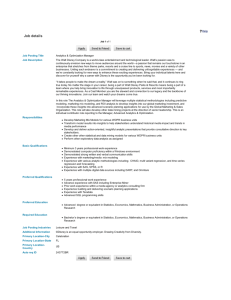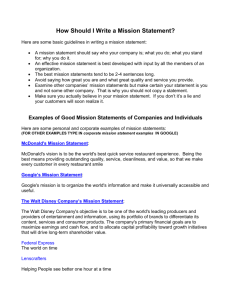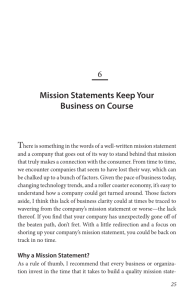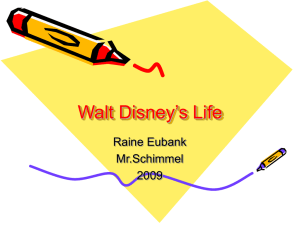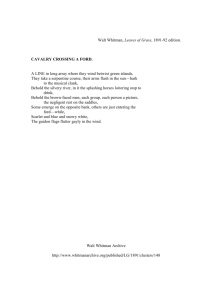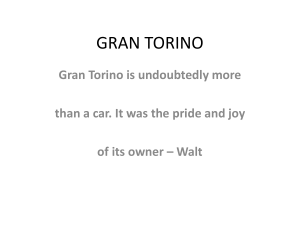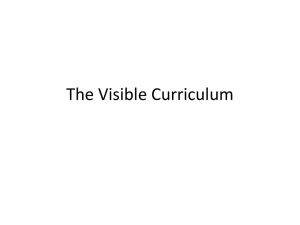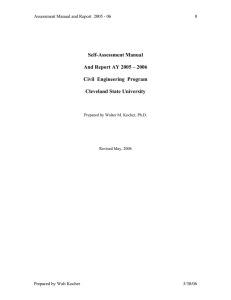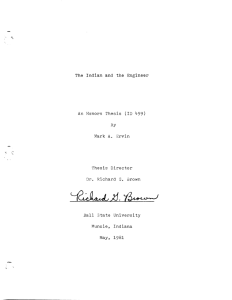Sending a Clear Message
advertisement
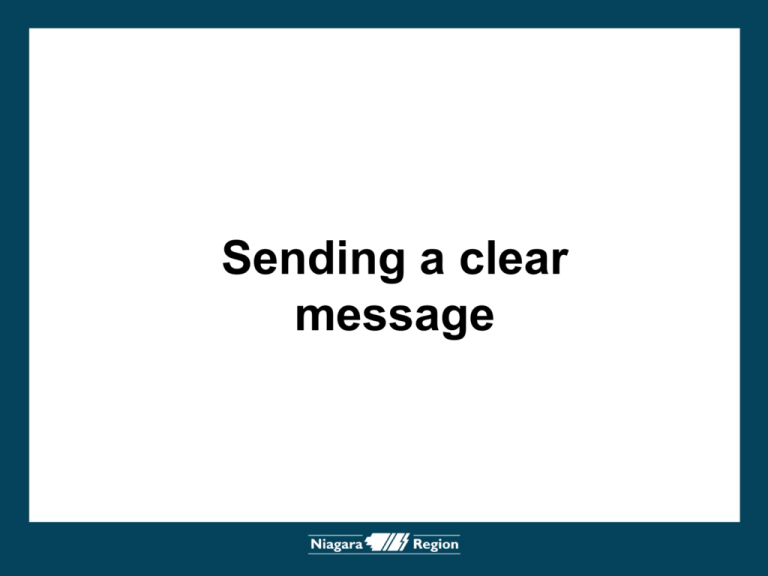
Sending a clear message But First A quick Exercise • • • • 6 minutes to complete No talking Everything you need is in the envelope Hand up if you complete it in the 6 minutes. What did we just do? Recreated standard business structure Leadership Middle Management Team Members x 3 Challenges Leadership Had the objective but struggled to share it effectively with the tools available. Middle Management Getting confusing messaging from both sides, may have been given the objective but found it though to share with all staff Team Members Asking for direction but objective was likely not shared. Lessons we can learn from Walt Culture and Vision Culture • Opened in 1955 • Construction was supervised by Walt himself • Security – Initially subcontracted to a private firm • Brought security team in house • Standardized customer service training – Included how to speak to Children – Pointing • Key Messaging – We are ALL here to help • Changes to uniform Vision Snow White • 1934 • Disney is struggling • Walt has a vision for the future Walt’s Vision http://youtu.be/Ihc4SrGNNyA?t=5m42s Continued Struggles • Disney’s Folly • Remortgaged his house • Studies that watching an animated film was dangerous Result • Opened 1937 • Biggest Grossing Film in US box office history (continues to be in the top 10 even today) • Cost $25* million to make - $131* million in box office takings (has made $416* million total) *figures based on 2014 inflation Lessons we can learn • There are some common themes to both incidents: – – – – Walt Identified the problem Walt Identified what the solution would look like Walt planned how to get there Walt committed to change and communicated his vision to EVERYONE involved Another key concept • Walt believed that Leaders are more important then Leadership in affecting change. • Leaders are anyone who affect change not just those in position of leadership • As such Leadership must ensure that the vision for their area of responsibility contributes to the overall vision of Division and the Corporation. – Determine direction – Identify the changes required – Articulate the vision How does this impact me? • You may or may not be part of your Public Health Leadership team… • But you are ALL seen as LEADERS in your organization Defining ‘Vision’ Leaders take responsibility for creating and communicating a clear vision of the change they want to create. Helping others see the vision is essential to success. A Vision is a picture of the future created in the imagination that motivates people to action. When a vision is communicated effectively, it: Creates a shared purpose Inspires passion Sets direction Conveys values Example – Niagara Region Current State (in 2013): – – – – – – Disjointed Regional Council Lower Tier Municipal Councils working independently LTM’s felt the Region was often working against them Divisions across the Niagara Region working in silos No specific culture Departments had different and sometimes conflicting goals. Example – Niagara Region Future State: – – – – Unified Regional Council Lower Tier Municipalities working in collaboration LTM’s being supported by the work of Niagara Region Division of the Corporation working together towards a common goal – Develop a unified culture – Departments looking for ways to contribute towards the common goal. How do we get there? oneteam@niagararegion.ca https://www.youtube.com/watch?v=hG42e 544k2o Again… What does this mean to me? • You can see that Walt Disney’s concepts continue to be used in many areas of business. • YOU as a Leader are able to make positive changes. • You can use the same concepts to make the changes How do you define YOUR vision? Communicating your vision • Active Communication – Once you have your Vision solidified you need to consider how and who you deliver it to – Clearly articulate your vision to all levels – Consider meeting with your fellow ‘Leaders’ to get further buy-in Putting your vision in place • Organize and Prioritize • Assess your needs, a great leader organizes their operation so information is shared, decisions are made and quality work is produced – efficiently and effectively. • Identify the changes that need to be made, how to make them, assess systems and processes for efficiency and quality. Putting your vision in place • Engage and Commit – Engage your team by giving them responsibility for performance of the business. – When decision making power goes to the employees, they have a greater sense of ownership, show initiative in their work and take pride in what they produce. – Change doesn’t happen overnight – Your team may get distracted and forget – A great leader stays focused and maintains the vision Key Takeaways • Recognize yourself as a ‘Leader’ • Set aside time to work on your Vision, engage your Medical Officer of Health to develop the ‘Vision’ of the future (use the worksheet that will be sent to you) • Use the slides to guide your planning • Finally… Commit to delivery and communicate your Vision to all Disney Institute Disneyinstitute.com
